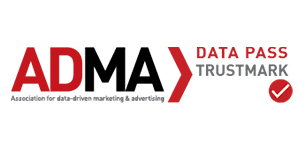Your first home will be a significant financial investment, so it's important to evaluate the different loan types, home loan features and interest rate options available. Finding the right loan for your circumstances could help you get into the property market sooner. Here are some common home loan features to help you know your first home loan.
Fixed rate
The interest rate for a fixed rate loan is fixed for a specified time period, usually between one and five years. This can give you the security of managing the same repayment amount within the loan’s agreed term. The potential disadvantage of this type of loan is that if interest rates decrease, your repayments will remain at the same rate for which your loan has been fixed. Extra repayments may be limited or not permitted, and break fees may be applicable. Check the terms and conditions with your home loan provider.
Variable rate
The interest rate for a variable rate loan will fluctuate as interest rates change during the agreed loan term due to changes in economic conditions. If you believe that interest rates will stay low for a while or even continue to fall, a variable rate may suit you. Your monthly repayments may change accordingly. The potential disadvantage of this rate is that while rates can go down, they can also go back up again, which would increase your monthly repayments.
You might opt to split your loan or change from a fixed rate to a variable rate and vice versa. Check the terms and conditions with your home loan provider accordingly, as break fees and switch fees may be applicable.
Offset account
A home loan that offers an offset account can help reduce your interest payments and save you money. The offset account is a transaction account that’s linked to your home loan. You can add any surplus amounts – perhaps from your savings, a bonus, or tax rebate – to the offset account to be ‘offset’ against your mortgage loan balance. This helps you reduce your interest payments, potentially saving you thousands of dollars over the term of your loan. Meanwhile, the funds will still be available in your offset account for any unexpected expenses.
Extra repayments
Some home loans allow you to make additional repayments above your minimum repayment amount. This can help you pay off your loan sooner and reduce the amount of interest paid. There may be limits imposed on the amount of extra repayments allowed.
Redraw facility
Where you are able to make extra repayments, you may be able to withdraw surplus repayments when needed. There may be limits or fees payable for the facility.
Repayment frequency
The repayment frequency is the schedule for making your repayments, which could be weekly, fortnightly, or monthly, depending on your loan contract.
Top up
A top up is an increase to your existing home loan to free up additional cash by borrowing extra money against your home loan, providing you have enough equity and are able to make the extra repayments.
Comparison rate
A comparison rate is designed to let you compare the true cost of one loan versus another, to help you avoid choosing a low-rate loan that looks attractive but may cost you more in the long run. It is expressed as an annual percentage rate and includes the loan's interest rate as well as any upfront and ongoing fees and charges. Lenders are legally required to show customers a comparison rate alongside a product's interest rate.
Find more useful home buying information and articles in our guide for first home buyers, Buying your first home. We also regularly publish home buying articles on our news page and social media, and you may find our Property Inspection Checklist and home loan glossary useful.
We’re ready to help you
G&C Mutual Bank has over 60 years’ experience in helping Australians with their home ownership dreams. We offer a range of home loans with competitive rates and our friendly team is ready to help you make your move.
Apply online, contact us, or connect with a Mobile Lender.




